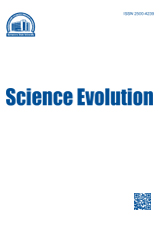Russian Federation
Russian Federation
Russian Federation
CSCSTI 27.01
CSCSTI 31.01
CSCSTI 34.01
Symbiotic microbiota system functions in homeostasis maintenance of organism are performed through production of multiple microbial low-molecular-weight compounds. Short-chain fatty acids (SCFAs) have a special and multifunctional role among similar compounds. The most important SCFA is a butyric acid which provides barrier and metabolic functions mainly in large intestine. Hyperacetylasion of histones due to histone deacetylase (HDAC) inhibition is one of the key mechanisms, by dint of which the butyric acid influences biologically the large intestine atypical cells. Butyric acid influence at the molecular level is studied insufficiently, in particular, even taking into account all positive effects, there is a danger of reactivation of latent infections which are in cells in their latent form and which may enter acute lytic phase when the transcriptional apparatus is activated. This article presents the study results of butyric acid mechanisms of influence on replication process of Epstein-Barr virus in cancer cells of different origin. It is demonstrated that under the butyric acid influence in epithelial and lymphoid cells transition from latent virus phase to lytic one takes place by means of BZLF-1 and BRLF-1 genes activation. Besides, the butyric acid inhibiting effect on epithelial nasopharynx cancer cells migration in vitro is demonstrated. Based on the obtained data, conclusions were made concerning practicability of butyric acid studying for further use as a functional product in the fight against cancer.
Epstein-Barr virus, short-chain fatty acids, viral genes, virus reactivation, migration
1. Ianiro G., Bibbo S., Gasbarrini A., Cammarota G. Therapeutic Modulation of Gut Microbiota: Current Clinical Applications and Future Perspectives. Current Drug Targets, 2014, vol. 15, no. 8, pp. 762-770.
2. Tlaskalová-Hogenová H., Štěpánková R., Kozáková H., Hudcovic T., Luca V., Tučková L., et al. The role of gut microbiota (commensal bacteria) and the mucosal barrier in the pathogenesis of inflammatory and autoimmune diseases and cancer: contribution of germ-free and gnotobiotic animal models of human diseases. Cellular & Molecular Immunology, 2011, no. 8, pp. 110-120. doihttps://doi.org/10.1038/cmi.2010.67.
3. Topping D.L., Clifton P.M. Short-Chain Fatty Acids and Human Colonic Function: Roles of Resistant Starch and Nonstarch Polysaccharides. Physiological Reviews, 2001, vol. 81, no.3, pp. 1031-1064.
4. Hill M.J. Bacterial fermentation of complex carbohydrate in the human colon. Eur J Cancer Prev, 1995, vol. 4, no. 5, pp. 353-358.
5. Cummings J.H. Microbial Digestion of Complex Carbohydrates in Man. Proceedings of the Nutrition Society, 1984, vol. 4, no. 1, pp. 35-44.
6. Layden B.T., Angueira A.R., Brodsky M., Durai V., Lowe W.L. Short chain fatty acids and their receptors: new metabolic targets. Translational Research, 2013, vol. 161, no. 3, pp. 131-40.
7. Smitha J.G., Yokoyamab W.H., Germana J.B. Butyric Acid from the Diet: Actions at the Level of Gene Expression. Critical Reviews in Food Science and Nutrition, 1998, vol. 38, no. 4, pp. 259-297.
8. Natarajan N., Pluznick P.L. From microbe to man: the role of microbial short chain fatty acid metabolites in host cell biology.
9. American Journal of Physiology - Cell Physiology, 2014, vol. 307, no.11, pp. 979-985.
10. Neish A.S. Microbes in Gastrointestinal Health and Disease. Gastroenterology, 2009, vol. 136, no. 1, pp. 65-80.
11. Livesey G., Elia M., Cummings J.Y., Rombeau J.L., Sakata T. Short-chain fatty acids as an energy source in the colon: metabolism and clinical implications [Physiological and Clinical Aspects of Short-Chain Fatty Acids]. UK, Cambridge University Press, 2004. pp. 27-82.
12. Lin H.V., Frassetto A., Kowalik E.J., Nawrocki A.R., Lu M.M, Kosinski J.R., Hubert J.A., Szeto D., Yao X., Forrest G., Donald J. Butyrate and Propionate Protect against Diet-Induced Obesity and Regulate Gut Hormones via Free Fatty Acid Receptor 3- Independent Mechanisms. PLoS One, 2012, vol. 7, no. 4, pp. e35240. doi:https://doi.org/10.1371/journal.pone.0035240.
13. Hsu C.H., Hergenhahn M., Chuang S.E., Yeh P.Y., Wu T.C., Gao M., Cheng A.L. Induction of Epstein-Barr virus (EBV) reactivation in Raji cells by doxorubicin and cisplatin. Anticancer Res., 2002, vol. 22, no. 6C, pp. 4065-4071.
14. Feng W.H., Hong G., Delecluse H.J., Kenney S.C. Lytic Induction Therapy for Epstein-Barr Virus-Positive B-Cell Lymphomas. J. Virol, 2004, vol. 78, no. 4, pp. 1893-1902.
15. Vinolo M.A., Rodrigues H.G., Renato T., Curi N., Curi R. Regulation of Inflammation by Short Chain Fatty Acids. Nutrients, 2011. vol. 3, no. 10, pp. 858-876.
16. Davie J.R. Inhibition of histone deacetylase activity by butyrate. J. Nutr., 2003, vol. 133, suppl. 7, pp. 2485S-2493S.
17. Imai K., Inoue H., Tamura M., Cueno M.E., Inoue H., Takeichi O., Kusama K., Saito I., Ochiai K. The periodontal pathogen Porphyromonas gingivalis induces the Epstein-Barr virus lytic switch transactivator ZEBRA by histone modification. Biochimie, 2012, vol. 94, no. 3, pp. 839-846.
18. Zhou X., Matskova L., Rathje L.Z., Xiao X., Gish G., Werner M., Ignatyev I., Yu N., Zhao W., Tian F., Hou B., Zhang Z., Pawson T., Chen F., Ernberg I. SYK interaction with ITGb4 suppressed by Epstein-Barr virus LMP2A modulates migration and invasion of nasopharyngeal carcinoma cells. Oncogene, 2014, vol. 34, no. 34, pp. 4491-4509. doi:https://doi.org/10.1038/onc.2014.380.
19. Park G.B., Park S.H., Kim D., Kim Y.S., Yoon S.H., Hur D.Y. Berberine induces mitochondrial apoptosis of EBV-transformed B cells through p53-mediated regulation of XAF1 and GADD45α. Int J Oncol., 2016, no. 26. doi:https://doi.org/10.3892/ijo.2016.3502.
20. Yin Q., Wang X., Roberts C., Flemington E.K., Lasky J.A. Methylation status and AP1 elements are involved in EBV-mediated miR-155 expression in EBV positive lymphoma cells. Virology, 2016, no. 494, pp. 158-167. doi:https://doi.org/10.1016/j.virol.2016.04.005.
21. Kinch A., Sundström C., Tufveson G., Glimelius I. Association between HLA-A1 and -A2 types and Epstein-Barr virus status of post-transplant lymphoproliferative disorder. Leuk Lymphoma, 2016, no. 22, pp. 1-8.
22. Kanda T., Furuse Y., Oshitani H., Kiyono T. Highly Efficient CRISPR/Cas9-Mediated Cloning and Functional Characterization of Gastric Cancer-Derived Epstein-Barr Virus Strains. J. Virol, 2016, vol. 90, no. 9, pp. 4383-93. doi:https://doi.org/10.1128/JVI.00060-16.
23. Yang X., Nishida N., Zhao X., Kanegane H. Advances in Understanding the Pathogenesis of Epstein-Barr Virus-Associated Lymphoproliferative Disorders. Iran J Allergy Asthma Immunol, 2015, vol. 14, no. 5, pp. 462-471.
24. Machado C., Melo Salgado J., Monjardino L. The unexpected finding of a splenic infarction in a patient with infectious mononucleosis due to Epstein-Barr virus. BMJ Case Rep., 2015, pp. 24-28. doi:https://doi.org/10.1136/bcr-2015-212428.
25. Wille C.K., Nawandar D.M., Henning A.N., Ma S., Oetting K.M., Lee D., Lambert P., Johannsen E.C., Kenney S.C. 5-hydroxymethylation of the EBV genome regulates the latent to lytic switch. Proc Natl Acad Sci U S A, 2015, vol. 112, no. 52, pp. E7257-E7265. doi:https://doi.org/10.1073/pnas.1513432112.
26. Rac J., Haas F., Schumacher A., Middeldorp J.M., Delecluse H.J., Speck R.F., Bernasconi M., Nadal D. Telomerase activity impacts on Epstein-Barr virus infection of AGS cells. PLoS One, 2015, vol. 10, no. 4, pp. 36-45. doi:https://doi.org/10.1371/journal.pone.0123645.
27. Jung Y.J., Choi H., Kim H., Lee S.K. MicroRNA miR-BART20-5p stabilizes Epstein-Barr virus latency by directly targeting BZLF1 and BRLF1. J Virol, 2014, vol. 88, no. 16, pp. 9027-9037. doi:https://doi.org/10.1128/JVI.00721-14.
28. Murata T. Regulation of Epstein-Barr virus reactivation from latency. Microbiol Immunol, 2014, vol. 58, no. 6, pp. 307-317. doi:https://doi.org/10.1111/1348-0421.12155.
29. Yang Y.C., Yoshikai Y., Hsu S.W., Saitoh H., Chang L.K. Role of RNF4 in the ubiquitination of Rta of Epstein-Barr virus. J Biol Chem, 2013, vol. 288, no. 18, pp. 12866-12879. doi:https://doi.org/10.1074/jbc.M112.413393.
30. Wang F., Jiang C., Sun Q., Yan F., Wang L., Fu Z., Liu T., Hu F. Downregulation of miR-429 and inhibition of cell migration and invasion in nasopharyngeal carcinoma. Mol Med Rep, 2016, vol. 13, no. 4, pp. 3236-3242. doi:https://doi.org/10.3892/mmr.2016.4940.
31. Pegtel D.M., Subramanian A., Sheen T.S., Tsai C.H., Golub T.R., Thorley-Lawson D.A. Epstein-Barr-virus-encoded LMP2A induces primary epithelial cell migration and invasion: possible role in nasopharyngeal carcinoma metastasis. J Virol, 2005, vol. 79, no. 24, pp. 15430-15442.
32. Noch E., Khalili K. Oncogenic Viruses and Tumor Glucose Metabolism: Like Kids in a Candy Store. Mol Cancer Ther., 2012, vol. 11, no. 1, pp. 14-23. doi:https://doi.org/10.1158/1535-7163.
33. Tsurumi T., Fujita M., Kudoh A. Latent and lytic Epstein-Barr virus replication strategies. Reviews in Medical Virology, 2005, vol. 15, no. 1, pp. 3-15.
34. Pierce C.W., Kapp J.A., Solliday S.M., Dorf M.E. Immune responses in vitro. J Exp Med., 1974, vol. 140, no. 4, pp. 921-938.
35. Wan L., Zhu S., Li Y., Liu S., Yang H., Li S., Li Y., Cheng J., Lu X. Production and characterization of LEA29Y, a variant of cytotoxic T-lymphocyte antigen 4-immunoglobulin, in Pichia pastoris. Appl Microbiol Biotechnol, 2011, vol. 91, no. 3, pp. 543-51. doi:https://doi.org/10.1007/s00253-011-3277-4.
36. Choi S.Y.C., Collins C.C., Gout P.W., Wang Y. Cancer-generated lactic acid: a regulatory, immunosuppressive metabolite? J Pathol, 2013, vol. 230, no. 4, pp. 350-355.
37. Chaitow L., Gilbert C., Bradley D. Recognizing and Treating Breathing Disorders. UK, Elsevier Health Sciences, 2013. 320 p.
38. Chatterjea M.N., Shinde R. Textbook of Medical Biochemistry: Eighth Edition. Panama, Jaypee-Highlights Medical Publishers Inc., 2012. 876 p.
39. Ayata R.E., Chabaud S., Auger M., Pouliot R. Behaviour of endothelial cells in a tridimensional in vitro environment. Biomed Res Int, 2015, 630461, pp. 1-9. doi:https://doi.org/10.1155/2015/630461.










